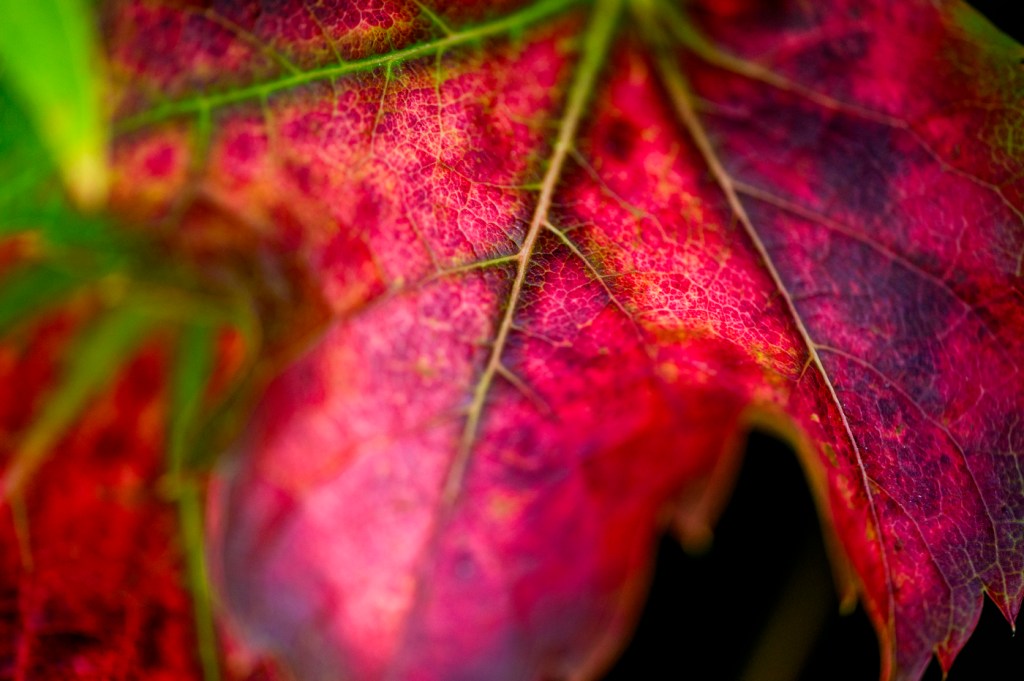Fall allergies are back. Why they may be worse than ever — and how to treat them
It’s that time of year again! Mansoor Amiji, a Northeastern University distinguished professor of pharmaceutical sciences and chemical engineering, provides advice on how to relieve your weed pollen and mold allergies.

Autumn brings cooler nights, changing leaf colors — and seasonal weed and mold allergies.
If your fall allergies seem worse than ever, chances are you are not wrong.
Ragweed, the main culprit in fall weed allergies, has not only been expanding in population size, but also in the length of its season due to changing climate conditions.
And then there’s mold, which thrives in damp piles of autumn leaf litter, releasing spores that float through the air and cause wheezing, runny noses, watery eyes and rashes or hives in people allergic to the fungal cells.
Mansoor Amiji, a Northeastern University distinguished professor of pharmaceutical sciences and chemical engineering, says the first line of defense is the same as with tree allergies in spring and grass pollen allergies in summer — treat the symptoms.

How do corticosteroids and NSAIDs work?
Amiji says over-the-counter intranasal corticosteroids like Flonase “work really well” to relieve allergic reactions such as sneezing, a runny or stuffy nose, and itchy, watery eyes.
They accomplish this by reducing inflammation and blocking the release of allergy-causing substances including histamines.
If the symptoms are confined to your eyes, Amiji suggests using nonsteroidal anti-inflammatory drug eye drops to relieve itching and burning. He says they are an effective antidote to his spring allergies. Acular is an example of the many NSAID eye drops on the market.
What are the other symptoms of autumn allergies?
Autumn allergies can do a lot more than irritate your eyes.
Other symptoms include an itchy throat, headaches, sinus pressure and nasal congestion, which can be severe enough to resemble a bad cold but linger a lot longer.
In those cases, people may want to consider oral or liquid antihistamines and decongestants, Amiji says.
“Antihistamines work by lowering the histamine response,” he says. “Decongestant comes in if you have a high mucus buildup, when you have that stuffy nose feeling that makes you feel like it’s hard to breathe.”
Pseudoephedrine is the active ingredient in decongestants such as Sudafed and is available without a prescription behind pharmacy counters.
Decongestants, antihistamines — or both?
Amiji says medications that combine decongestants with antihistamines, such as Allegra-D, Zyrtec-D and Claritin-D, can combat both allergic reactions and compounding nasal congestion.
“But if you’re just having a runny nose and maybe itching in the eyes, then an antihistamine by itself works well,” Amiji says. “It depends on the symptoms.”
The active ingredient in antihistamines such as Benadryl is called diphenhydramine hydrochloride or diphenhydramine HCI.
Older antihistamines like Benadryl tend to cause drowsiness, and while companies are formulating medications to reduce or eliminate sleepiness, Amiji suggests taking them at night to be on the safe side.
He advises shoppers should pass on decongestants that still list phenylephrine as the only active ingredient since an FDA panel concluded last year that the ingredient is ineffective.
“What they found was that the blood levels of these drugs were not sufficient to actually reach all the way to the nose,” Amiji says.
When should you consider immunotherapy?
The American College of Allergy, Asthma and Immunology says people with severe allergies may want to consider immunotherapy such as allergy shots that can help their bodies build resistance or prescription tablets that dissolve under the tongue.
The tablets need to be started 12 weeks before the beginning of ragweed season — which is too late for this year’s sufferers since ragweed typically starts in late summer and peaks in mid-September.
Why is the ragweed season getting longer?
The arrival of October does not mean relief is on the way yet for those who suffer from ragweed pollen allergies.
Since 1995, ragweed pollen season has grown longer at 10 of 11 locations in the U.S. and Canada studied by the Environmental Protection Agency, increasing by 21 days in Fargo, North Dakota, and 18 days in Minneapolis.
Featured Posts
The longer pollen season is associated with delays in ragweed-killing first frosts, due to warmer temperatures associated with climate change, the EPA says.
Other plants that trigger fall allergies include burning bush, tumbleweed and Russian thistle, but ragweed is the worst offender.
Invasive and productive, one ragweed plant can produce billions of light, dry pollen grains that can travel hundreds of miles, according to the Asthma and Allergy Foundation of America.
About one in seven people are allergic to ragweed pollen, accounting for millions of sufferers across the U.S., particularly in Eastern and Midwestern states where ragweed is most populous.
Will the first frost relieve my symptoms?
People allergic to ragweed pollens can look forward to the first hard frost killing the annual plant.
That is not the case for those who suffer from allergies to molds, which do not die with the first killing frost, according to the AAFA.
The organization suggests closing windows at night to avoid contact with ragweed pollen and mold spores and cleaning gutters and keeping wet leaves away from the house to further reduce contact with spores.
Since mold can also grow inside in humid conditions, people should regularly clean bathrooms and consider using dehumidifiers in damp areas such as basements.











